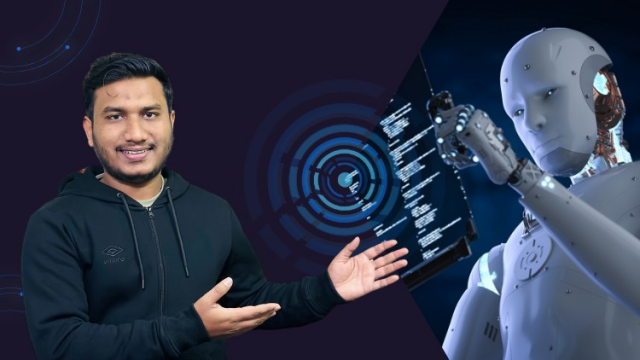Master Generative AI, Model Context Protocol (MCP), and build cutting-edge AI Agent Systems with Python & LLMs
What you’ll learn
- Understand the fundamentals of Generative AI and Large Language Models (LLMs)
- Design and build scalable Generative AI applications using Advanced Gen AI Application Architecture
- Master Retrieval-Augmented Generation (RAG) techniques for smarter applications
- Explore and leverage orchestration frameworks like LangChain and LlamaIndex
- Gain hands-on experience with LangChain Expression Language (LCEL) and its Ecosystem
- Develop strong Prompt Engineering skills to optimize LLM outputs
- Build end-to-end Gen AI applications across multiple complexity levels (Beginner to Professional)
- Implement AI Agent and Multi-Agent systems for advanced automation
- Integrate Multimodal data (text, image, etc.) into Generative AI applications
- Learn LLMOps (Large Language Model Operations) for efficient deployment and management
- Deploy Generative AI applications to production using CI/CD pipelines
- Understand and implement Model Context Protocol (MCP) for context-aware applications
- Fine-tune Large Language Models (LLMs) to fit custom project needs
- Work on real-world Generative AI projects to solidify practical knowledge
Requirements
- Basic understanding of Python programming
- Familiarity with fundamental concepts of machine learning (helpful but not mandatory)
- No prior experience with Generative AI or LLMs required
- Curiosity and willingness to learn cutting-edge AI technologies
Description
This hands-on course teaches you how to build professional level Generative AI Application, intelligent, autonomous AI Agents using MCP (Model Context Protocol) and modern LLM frameworks.
Whether you’re an AI beginner or an experienced developer, this course will take you step-by-step through the tools, strategies, and architectures that power modern GenAI applications.
What You’ll Learn:
– Introduction to Generative AI and its role in modern development
– Introduction to Large Language Models (LLMs) and how they power intelligent applications
– Generative AI Architecture Basics – understand the core components of a Gen AI application
– Advanced Gen AI Application Architecture for scalable and modular systems
– How to apply the Retrieval-Augmented Generation (RAG) technique for enhanced responses
– Choosing the Right Orchestration Framework for building LLM-powered apps
– LangChain – A modern framework for LLM orchestration
– LangChain Expression Language (LCEL) – Build AI flows with clean, declarative syntax
– Deep dive into the LangChain Ecosystem for agents, tools, memory, and chains
– Mastering Prompt Engineering – Learn to craft optimal prompts for LLMs
– Level 1 Gen AI Applications – Basic AI-powered tools and assistants
– LlamaIndex – An alternative to LangChain for RAG and LLM app orchestration
– LLMOps (Large Language Model Operations) – Manage and monitor LLM Apps
– Level 2 Gen AI Applications – Build intermediate systems with memory, tools, and retrieval
– Develop Multimodal Gen AI Applications (text, image, audio integration)
– Build and deploy AI Agents & Multi-Agent Systems using orchestration frameworks
– Level 3 (Professional) Gen AI Applications – Real-time, scalable, production-ready systems
– CI/CD for Gen AI – Deploy your Gen AI apps with automated pipelines
– Understand and implement MCP (Model Context Protocol)
– Hands-on Projects – From AI assistants to autonomous agents and RAG-powered apps
– Fine-tuning LLMs for domain-specific use cases and better performance
Who this course is for:
- Developers and software engineers interested in building Generative AI applications
- Data scientists and machine learning engineers looking to integrate LLMs into real-world projects
- AI enthusiasts eager to explore cutting-edge concepts like AI Agents, MCP, RAG, and LLMOps
- Students and researchers who want practical experience in developing AI-powered applications
- nyone curious about building end-to-end, production-ready Generative AI systems, from beginner to advanced levels
Click here to view the full details of the resource.:URL


